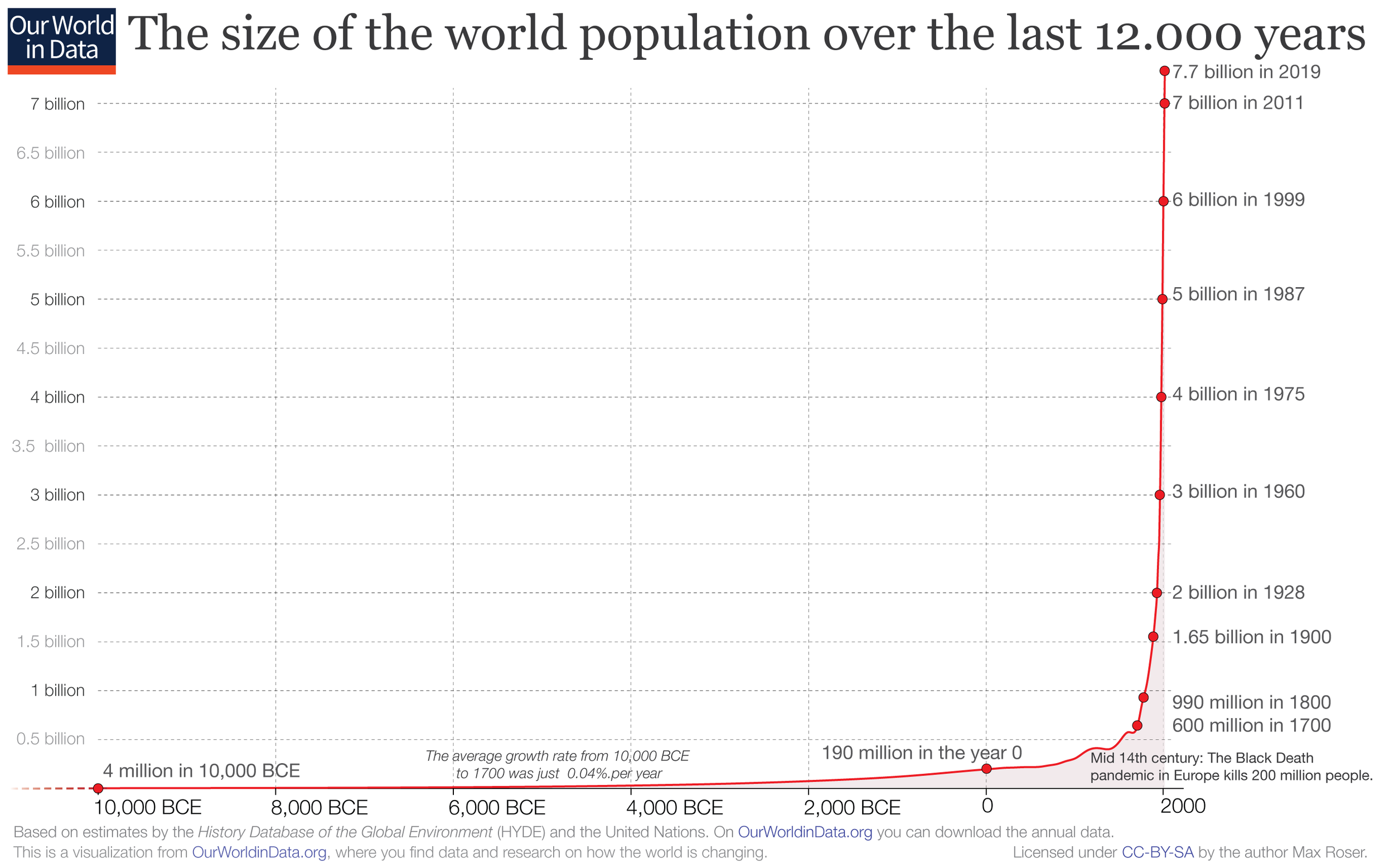Episode 1- Two Million Wolves Inside Us
America once had 2 million wolves. Unfortunately, we’ve almost wiped them out. In order for us to understand the anthropogenic affects of colonizing a continent, I’ve put a few resources together. This is in the hopes that you’ll spend some time pondering what’s normal. If you’re interested in learning more about North American wolves, try visiting Gray Wolf Conservation’s site.
Here’s a list of U.S. City sizes if you’d like to find a new place to live. There’s a lot of great information to be found over at the Center for Biological Diversity who have been fighting the current administration’s attempts to remove protections for our devastated population of wolves. Some of the information used in this podcast relating to range estimates were found at Wolf Worlds.
World population explosion is staggering when put into relative terms of the geologic timescale. While there are thousands of contributing factors to our success and dominance of our Normal Earth, it’s a sobering realization that our success is directly related in many ways to the suppression of other species.
Courtesy of OurWorldinData.org
In the abundance of our normal earth’s pre-industrial resources it was believed that forests were inexhaustible and thus were cut down at unfettered rates. In the wake of our technological prowess, we now have inherited a world densely packed and is on the verge of climactic change. OurWorldinData.org
By 2088, it’s estimated that we’ll have another 3 billion people on Earth, or equal to the world’s total population in 1927 added to our numbers. A question I ask myself is why Jeff Bezos is building a bunker inside a mountain, with his space ship parked in the driveway?
To quote from a 2011 Wired Article,
Over the lifetime of this clock, the United States won’t exist,” Bezos tells me. “Whole civilizations will rise and fall. New systems of government will be invented. You can’t imagine the world — no one can — that we’re trying to get this clock to pass through.
Take some time to focus on the natural world around us, not mindlessly consuming it. If we’re going to survive the next hundred years there have to be drastic changes to how we treat the natural world. Below are some of the resources I suggest reading and exploring as we talk about how much humans have contributed to our world in good and bad, and what we can do to learn from the past.
Reading from the firsthand accounts of Spanish colonization shows not only the resource destruction, but also of civilization collapse.
America : being the latest, and most accurate description of the New World : containing the original of the inhabitants, and the remarkable voyages thither : the conquest of the vast empires of Mexico and Peru, and other large provinces and territories, with the several European plantations in those parts : also their cities, fortresses, towns, temples, mountains, and rivers : their habits, customs, manners, and religions : their plants, beasts, birds, and serpents : with an appendix containing, besides several other considerable additions, a brief survey of what hath been discover'd of the unknown south-land and the Arctick region
John Ogilby & Arnoldus Montanus-1671
READ ONLINE FREE
DOWNLOAD FREE KINDLE BOOK HERE
Possible Target Corridor for Sustainable Use of Global Material Resources - Stefan Bringezu
In order to understand some of the policy issues surrounding global consumption, the research done by Wuppertal Institute and Center for Environmental Systems Research is a good starting point for anyone wishing to know just how much we consume, and where we need to be in order to maintain homeostasis of our available resources. To read the full article, click HERE
With headlines such as:
Earth has lost half of its wildlife in the past 40 years, says WWF
we find ourselves in a precarious situation. Emotional responses to reports like these swing wildly in both directions, with dissent dismissing human impact freely and openly on the 24-hour news circuit. Pulling from the article, we read statements such as:
A second index in the new Living Planet report calculates humanity’s “ecological footprint”, ie the scale at which it is using up natural resources. Currently, the global population is cutting down trees faster than they regrow, catching fish faster than the oceans can restock, pumping water from rivers and aquifers faster than rainfall can replenish them and emitting more climate-warming carbon dioxide than oceans and forests can absorb.
And so for now, dear friends, I leave you with the “Last Will and Testament” of a prolific social scientist Mayer Hillman in his final article, titled:











Seed establishment or overseeding of grass with premium grade Madison Parks turfgrass variety.
Thrives in full sun or light shade and is ideal for moderate traffic areas.